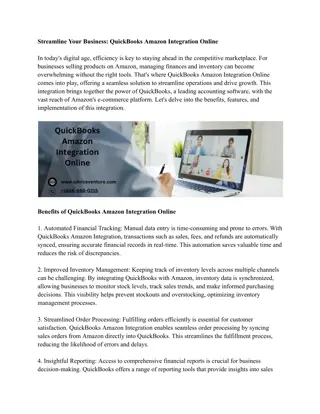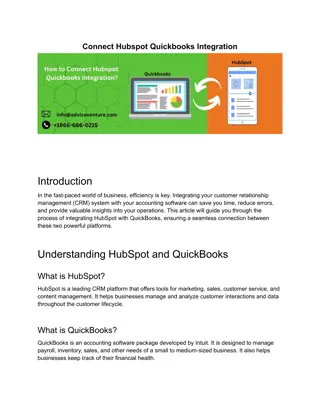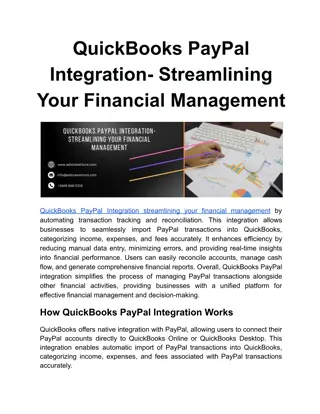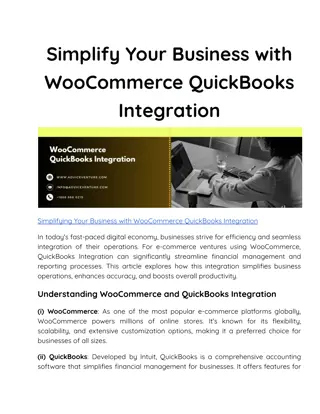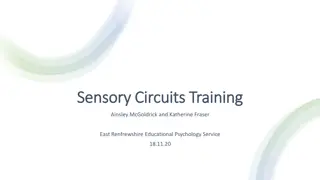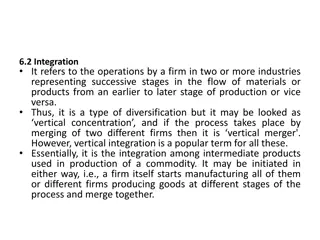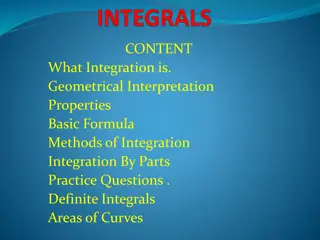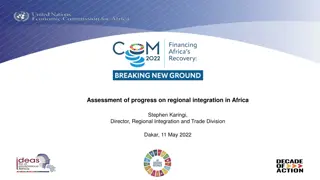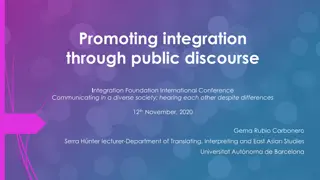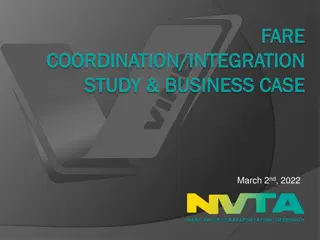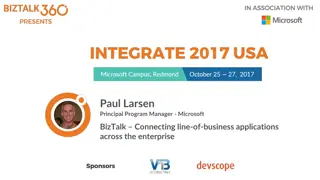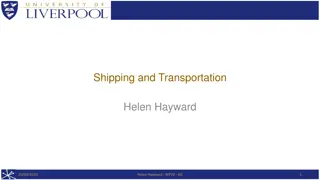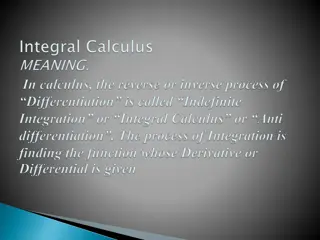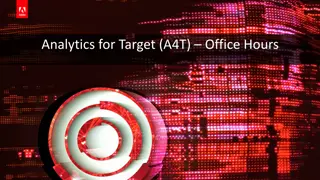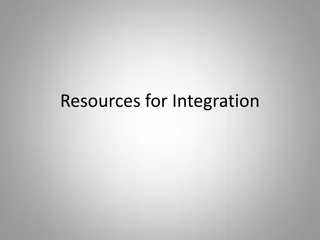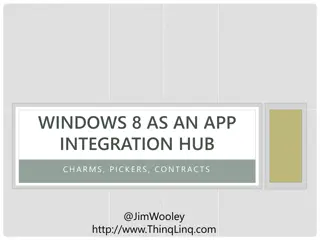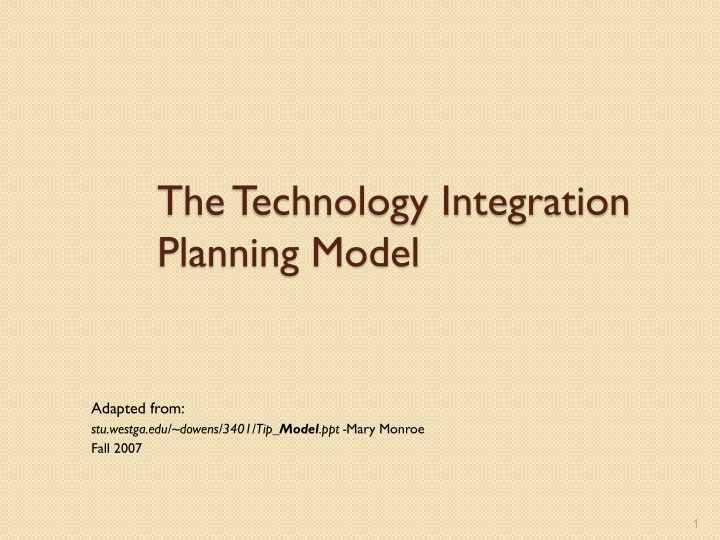
Technology Integration Planning Model and Skills Considerations
Explore the Technology Integration Planning Model and the essential skills required for successful technology implementation, including operational, functional, strategic, and social aspects. Adapted from educational resources, this guide emphasizes the importance of technical proficiency, knowledge mastery, strategic decision-making, and social competence in utilizing technology effectively in educational settings.
Download Presentation

Please find below an Image/Link to download the presentation.
The content on the website is provided AS IS for your information and personal use only. It may not be sold, licensed, or shared on other websites without obtaining consent from the author. If you encounter any issues during the download, it is possible that the publisher has removed the file from their server.
You are allowed to download the files provided on this website for personal or commercial use, subject to the condition that they are used lawfully. All files are the property of their respective owners.
The content on the website is provided AS IS for your information and personal use only. It may not be sold, licensed, or shared on other websites without obtaining consent from the author.
E N D
Presentation Transcript
The Technology Integration Planning Model Adapted from: stu.westga.edu/~dowens/3401/Tip_Model.ppt -Mary Monroe Fall 2007 1
Hierarchy of Considerations Four aspects of technology skills Operational Functional Strategic Social Adapted from Janice Light Toward a Definition of Communicative Competence for Individuals Using Augmentative and Alternative Communication Systems Journal of AAC, 1989, p.137-143 2
Operational Skills Technical skills required to operate the device or system Includes skills to use the access method Operational Skills: -Teacher How the technology works How to manage and maintain the technology 3
Functional Skills Mastery of the specific knowledge or abilities for which the device was chosen. Teacher Teaching with the technology as part of instruction Teaching someone to use technology Kindle Student Know what to do with it 4
Strategic Skills Decide when to use the tool Choose which tool to use for a specific activity or task See full size image Teacher Skills: Knowing when to use technology Student Knowing when to use it and when not to use it 5
How to help others understand reasons for use of AIM and AT Social Skills Use technology where others are present Use technology with others Help others understand the reasons for and use of the technology Social Skills Teachers: How to manage a classroom where students use technology How to help others understand reasons for use of AIM and AT Students: Knowing how to use in a social and real-world context 6
Hierarchy of Considerations Four aspects of technology skills Operational Functional Strategic Social Adapted from Janice Light Toward a Definition of Communicative Competence for Individuals Using Augmentative and Alternative Communication Systems Journal of AAC, 1989, p.137-143 7
Step 1: Determine Relative Advantage Step1 Questions What is the problem I am addressing? Do not focus on technologies What is the curriculum content? What 21st century learning skills will be addressed? What tasks do I want the student to engage in? Look for evidence Do technology-based methods offer a solution with sufficient relative advantages? 8
Step 1: Determine Relative Advantage Estimate the impact Consider the required effort and expense Does this strategy support 21st century learning and UDL initiatives? 9
Step 2: Decide on Objectives and Assessments Example outcomes, objectives, and assessments Critical thinking Problem solving Collaboration Innovation Creativity Communication Step 2 Questions What outcomes do I expect from using the new methods? Focus on results, not process Observable and measureable 10
Step 2: Decide on Objectives and Assessments What are the best ways of assessing these outcomes? Provide student with multiple means of expression Use written test to assess skill achievement outcomes Computer generated outcomes Use evaluation criteria checklists to assess complex tasks or products Use rubrics to assess complex tasks or products 11
Step 3: Design Integration Strategies Deciding on teaching/learning methods Use directed and constructivist strategies Assistive technology Accessible Instructional materials Step 3 Questions What kinds of instructional methods are needed in light of content objectives and student characteristics? Content approach Grouping approach Whole class, individual, pairs, and small group 12
Step 3: Design Integration Strategies How can technology best support the IEP goals and objectives and the curricular tasks? How can I prepare students adequately to use technologies? Prepare and teach students before graded product Measure content not ability to use the technology 13
Step 4: Prepare the Instructional Environment Essential conditions for effective technology uses Adequate hardware, software, and media Time to use resources Special needs of students Planning for technology use Questions What equipment, software, media, and materials will I need to carry out the instructional strategies? Computers Copies of software and media Access to peripherals Handouts and other materials 14
Step 4: Prepare the Instructional Environment How should resources be arranged to support instruction and learning? Access by students with disabilities Provide for: Visibility Avoid distractions Access to materials Classroom organization that supports the activities Privacy and safety issues What planning is required to make sure technology resources work well? Troubleshooting Test-runs and backup plans 15
Step 5: Evaluate and Revise Integration Strategies Evaluation issues Were objectives and outcomes achieved? What do students say? Could improving instructional strategies or the environment improve results? Have I integrated technology well? 16
Step 5: Evaluate and Revise Integration Strategies Questions How well has the technology integration strategy worked? Achievement and attitude data Students comments What could be improved to make it work better? Scheduling Technical skills Efficiency 17
Instructional Strategies What instructional content and strategies will be needed for the student to use the materials effectively? Understanding general ed initiatives Understanding the teacher s personal focus and priorities Helping to create a shared vision of how technology can be supported Gayle Bowser(gaylbowser@aol.com Closing the Gap 2010 18
Differentiation Planning and delivery of instruction that addresses the varied levels of readiness, learning needs, and interests the student Guiding principles Ongoing assessment Timely adjustments Respectful tasks Flexible grouping Gayle Bowser(gaylbowser@aol.com Closing the Gap 2010 19
Differentiation Based on Student s Readiness Interests Learning profile Gayle Bowser(gaylbowser@aol.com Closing the Gap 2010 20
Student Readiness Levels of Participation Competitive Active Involved None Gayle Bowser(gaylbowser@aol.com Closing the Gap 2010 21
Student Interest Topical groups Student choices Project based learning Gayle Bowser(gaylbowser@aol.com Closing the Gap 2010 22
Learning Profile Visual learner Learns best alone Self directed Active learner Concrete learner Auditory learner Learns best in groups Needs guidance Reflective learner Abstract learner 23
Differentiation Take a closer look at accommodations/modifications What affects learning the most is how well classrooms are managed Gives teachers more time to teach Part of the reason for issue with technology is that it takes away from the time they have to teach..to learn it Gayle Bowser(gaylbowser@aol.com Closing the Gap 2010 24
Classroom Management #1 factor affecting student learning 25
Estimated use of school time Hrs/Day Hrs/Year Total available time 6 1080 Academic learning time Engaged time 0.6-1.5 108-270 1.5-3.5 270-430 Attendance time 5.4-6.0 970 Berliner s Beginning Teacher Evaluation Study (G. Bowser CTG 2010) 26
Classroom Management The actions teachers take to create, implement, and maintain a classroom environment that support learning include: Classroom organization Rules procedures and goals Anticipatory set Relationships Behavior Carolyn M. Evertson Classroom Management in Psychology and Educational Practice Eds. Walbberg & Haertel, 1997 27
Classroom Organization You can tell a lot about how teachers teach by the seating Teacher centered Teacher down the center aisle Centers/cooperative learning, interaction Gayle Bowser(gaylbowser@aol.com Closing the Gap 2010 28
Classroom Organization for Accessible Instructional Materials Look for these features: Visibility Distractibility Access to technology Access to materials Classroom organization that supports the activities Can the teacher see the student and what the student is doing? Gayle Bowser(gaylbowser@aol.com Closing the Gap 2010 29
Revisit Go back to the question what change in student s performance do we hope to see? Look back at the previous expectations don t expect changes if the supports the kids are used to don t change Gayle Bowser(gaylbowser@aol.com Closing the Gap 2010 30
Resources Bowser, G. & Zabala, J. 2010. Helping teachers integrate AIM in classroom instruction. Closing the Gap Preconference. Light, J. 1989. Toward a definition of communicative competence for individuals using augmentative and alternative communication systems. Journal of AAC, p.137-143. Monroe, M. 2007. Technology Integration Plan Fall 2007 http://stu.westga.edu/~dowens/3401/index.html 31

